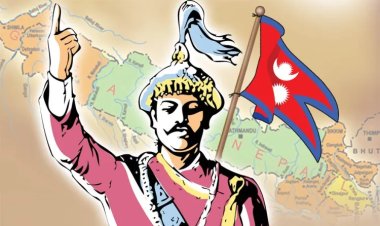Marketing in Nepal: Strategies for Success in a Growing Market
Unlock the potential of marketing in Nepal with our comprehensive guide. Explore strategies for success in this emerging market and understand consumer behavior.

Introduction
Nepal, a land of breathtaking landscapes and diverse cultures, is not only a tourist haven but also an emerging market that offers immense potential for businesses. In recent years, Nepal has witnessed significant economic growth and social transformation, making it an attractive destination for businesses looking to expand their horizons. In this article, we will delve into the world of marketing in Nepal, exploring the unique aspects of this growing market and uncovering strategies for success.
Understanding the Nepali Market
Market Overview
To embark on a successful marketing journey in Nepal, it is essential to gain a comprehensive understanding of the market dynamics. Nepal, with a population of approximately 30 million people, is a relatively small but promising market. Its diverse geography, which includes the towering Himalayas, lush hills, and flat terai plains, creates unique challenges and opportunities.
Demographics and Economic Indicators
Nepal's demographic composition is youthful, with over 70% of the population below the age of 35. This youthful demographic presents an incredible opportunity for businesses looking to cater to the aspirations and preferences of the younger generation.
In terms of economic indicators, Nepal has been experiencing steady economic growth in recent years. The country's GDP is on the rise, and there is an emerging middle-class population with increasing purchasing power. This middle-class expansion is driven by factors such as urbanization, rural-urban migration, and remittances from Nepali workers abroad.
Consumer Behavior
Understanding Nepali consumer behavior is crucial for effective marketing. Nepali consumers have unique preferences and buying habits influenced by factors like culture, tradition, and economic conditions. The concept of brand loyalty is still evolving, and consumers tend to value products and services that offer quality and affordability.
Challenges and Opportunities
Market Challenges
While Nepal's market holds promise, it comes with its set of challenges for businesses. Some of the prominent challenges include:
- Infrastructure Constraints: Nepal's infrastructure, including transportation and logistics, is still developing. Businesses may face difficulties in distribution and supply chain management.
- Regulatory Hurdles: Navigating through bureaucratic red tape and regulatory processes can be time-consuming for businesses.
- Cultural Diversity: Nepal's cultural diversity means that marketing strategies need to be localized to resonate with different ethnic groups and regions.
Emerging Opportunities
Despite the challenges, Nepal offers several opportunities for businesses willing to invest and innovate. Some of the emerging opportunities in the Nepali market include:
- Technology Sector: Nepal has seen a surge in technology adoption, creating opportunities in e-commerce, digital services, and software development.
- Tourism: The tourism sector continues to thrive, attracting both international and domestic tourists. Businesses related to hospitality and adventure tourism can benefit.
- Agriculture: Agriculture remains a significant contributor to Nepal's economy. Investments in agribusiness and food processing hold potential.
Targeting the Nepali Audience
Understanding the Audience
One of the critical factors in successful marketing in Nepal is understanding the diverse audience. Nepal's population is not only diverse in terms of ethnicity but also in terms of geographic location. The preferences and lifestyles of people residing in the hilly regions significantly differ from those in the terai plains.
Localizing Marketing Efforts
Localization is the key to capturing the hearts of Nepali consumers. Brands that celebrate Nepali culture and values in their messaging and marketing strategies tend to resonate more with the local population. This approach not only showcases cultural sensitivity but also establishes authenticity and familiarity.
Additionally, brands have witnessed remarkable success by implementing aggressive tactical campaigns during festival months when Nepali traditions and festivities are at their peak. By participating in and respecting local traditions, brands can forge deeper emotional connections with the Nepali people.
Digital Marketing in Nepal
Rise of Digital Marketing
Nepal has witnessed a significant rise in digital marketing, primarily due to increased internet penetration and smartphone usage. Social media platforms like Facebook, Instagram, and YouTube have become popular avenues for businesses to reach their target audience.
Digital marketing offers cost-effective ways to engage with consumers and measure the effectiveness of campaigns. It allows for precise targeting and personalization of content.
Utilizing Social Media
Social media plays a pivotal role in connecting with the Nepali audience. Nepali consumers, particularly the youth, are active on social media platforms. Therefore, businesses need to have a strong presence on these platforms to engage with potential customers.
Creating engaging and culturally relevant content on social media can help businesses build a loyal following. Social media marketing can also facilitate direct interactions with customers, allowing brands to address their queries and concerns effectively.
Building Brand Loyalty
Cultural Sensitivity
Building brand loyalty in Nepal requires a high degree of cultural sensitivity. Brands that respect and incorporate Nepali culture and values in their operations tend to earn the trust and loyalty of consumers. This includes respecting traditions, customs, and festivals.
Brands that actively engage with local communities and participate in social initiatives also tend to create a positive brand image. Demonstrating a commitment to the well-being of Nepali society can go a long way in building trust.
Measuring Brand Loyalty
Measuring brand loyalty in Nepal can be challenging but essential. Brands can employ various methods to gauge customer satisfaction and loyalty, including customer feedback, surveys, and social media sentiment analysis.
It is vital to listen to the voice of the customer and adapt marketing strategies based on their feedback. By continuously monitoring and improving customer satisfaction, brands can foster long-term loyalty.
Future Trends in Nepali Marketing
The Evolving Market
The marketing landscape in Nepal is constantly evolving. To stay competitive, businesses must be aware of future trends and adapt accordingly. Some potential future trends in Nepali marketing include:
- E-commerce: The growth of online shopping and e-commerce platforms is expected to continue, presenting opportunities for businesses to expand their digital presence.
- Sustainability: Nepali consumers are becoming increasingly conscious of sustainability and ethical practices. Brands that prioritize sustainability may gain a competitive edge.
- Influencer Marketing: Collaborating with local influencers and personalities can be an effective way to reach a broader audience in Nepal.
Preparing for the Future
To prepare for the future, businesses should consider the following recommendations:
- Invest in Digital: Continue investing in digital marketing strategies and stay updated with the latest trends and technologies.
- Sustainability Initiatives: Integrate sustainability into business practices to align with changing consumer values.
- Local Partnerships: Collaborate with local organizations, influencers, and communities to build trust and credibility.
Conclusion
In conclusion, marketing in Nepal presents a world of opportunities for businesses willing to navigate its unique challenges and embrace its rich culture. Understanding the Nepali market, consumer behavior, and the importance of localization are key to success. As Nepal's economy continues to grow, businesses should seize the opportunity to build brand loyalty and prepare for future trends.
By adopting strategies that resonate with the Nepali audience, businesses can not only thrive in this growing market but also contribute to the development of the local economy. Nepal, with its youthful population and evolving middle class, is a market poised for success for those who are ready to embrace it.
What's Your Reaction?





































































































